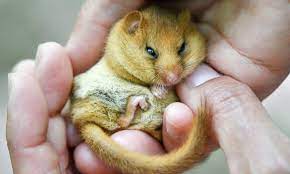Hazel dormice becoming endangered in UK amid 70% decline, says study

London: Populations of the hazel dormouse, perhaps the most elusive native British mammal, have plummeted by 70% this century.
The nocturnal, tree-dwelling animals are now extinct in 20 counties in England and the species must be reclassified as “endangered” on the International Union for Conservation of Nature red list, according to a study by the People’s Trust for Endangered Species (PTES).
Since the previous State of Britain’s Dormice report was published in 2019, they have vanished from Hertfordshire, Staffordshire and Northumberland.
The key factor in their decline is the loss of the scrubby under-storey in woodlands where the arboreal dormice live and feed in spring and summer, but the problem has been compounded by climate change, according to conservation scientists.
Dormice hibernate for six months in nests below ground but milder winters mean they are increasingly emerging from hibernation when there is no food available. Between 40% and 70% of dormice die during the hibernation period.
Ian White, a dormouse officer at PTES, said: “There’s an old Worcestershire saying: ‘Woods don’t grow beneath trees’, and we no longer have this complexity and under-storey in woods because of increased browsing by deer, but also increased shading – we don’t cut our woodlands enough.
“It’s a double-whammy. Now winters are becoming more mild and variable, there’s a danger that dormice will wake up and they can only do that so many times before they run out of energy. Wetter springs and summers also stop dormice feeding because their fur is not waterproof [so they don’t go out in rain], and they only produce on average four young per year – they don’t have the breeding potential of mice and rats.
“If the decline continues at the same rate, in another 30 years dormouse populations will have fallen by 94% since 2000, which we simply cannot let happen.”
With its caramel fur, big black eyes and furry tail, the hazel dormouse, or Muscardinus avellanarius, is a flagship species for the conservation of many woodlands. Its presence is an indicator of wider animal and plant diversity, and woodland health.
A small army of volunteers are helping the PTES and other charity partners try to arrest the decline. They have been regularly checking hundreds of dormouse nest boxes in woodlands across the country since 1990, the longest-running small terrestrial mammal monitoring programme in the world.
Conservationists need to understand if dormouse populations are surviving outside woodlands, and how these populations might be helped.
Last year PTES launched its dormouse footprint tunnel survey to monitor non-woodland habitats, including hedgerows and scrubland. Anecdotal evidence suggests some dormice are thriving on scrubby land beside roads and railways.
White said: “Once we have data from non-woodland sites too, we can target conservation efforts more widely, which we hope will start to reverse the decline.”





